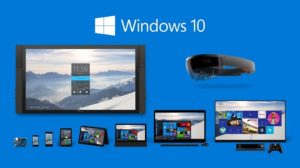Let’s review the latest editions of Windows, as we will most certainly require this skill in the new Windows 10 certification exams.

Here they are:
First, we have the baseline editions. Baseline editions are the only editions available as standalone purchases in the retail outlets.
Baseline Editions
- Home – Windows 10 Home edition is designed for use in PCs, tablets and 2-in-1 PCs. It includes all consumer-directed features.
- Pro – Windows 10 Pro includes all features of Windows 10 Home, with additional capabilities that are oriented towards business environments, such as Active Directory, Remote Desktop, BitLocker, Hyper-V, and Windows Defender Device Guard.
- Pro for Workstations – Windows 10 Pro for Workstations is designed for high-end hardware for intensive computing tasks and supports Intel Xeon, AMD Opteron and the latest AMD Epyc processors; up to four CPUs; up to 6 TB RAM; the ReFS file system; Non-Volatile Dual In-line Memory Module (NVDIMM); and remote direct memory access (RDMA).
Next, we have the organizational editions. These editions add features to facilitate centralized control of many installations of the OS within an organization. The main avenue of acquiring them is a volume licensing contract with Microsoft.
Organizational Editions
- Enterprise – Windows 10 Enterprise provides all the features of Windows 10 Pro, with additional features to assist with IT-based organizations. Windows 10 Enterprise is configurable on three branches, Semi-Annual Channel, Semi-Annual Channel (Targeted), and Windows Insider.
- Education – Windows 10 Education is distributed through Academic Volume Licensing. Initially, it was reported to have the same feature set as Windows 10 Enterprise. As of version 1709, however, this edition has fewer features.
- Pro Education – This edition was introduced in July 2016 for hardware partners on new devices purchased with the discounted K–12 academic licenses. It features a “Set Up School PCs” app that allows provisioning of settings using a USB flash drive and does not include Cortana, Microsoft Store suggestions or Windows Spotlight.
- Enterprise LTSC – Enterprise LTSC (Long-Term Servicing Channel) is a long-term support version of Windows 10 Enterprise released every 2 to 3 years. Each release is supported with security updates for 10 years after its release and intentionally receive no feature updates. Some features, including the Microsoft Store and bundled apps, are not included in this edition. This edition was first released as Windows 10 Enterprise LTSB (Long-Term Servicing Branch). There are currently 4 releases of LTSC: two in 2015, one in 2016 and one in 2018/2019.
Finally, there are the device-specific editions. These editions are licensed to device manufacturers only. The main avenue of purchasing these editions is through buying specific devices (e.g. smartphones) that have them pre-installed.
Device-Specific Editions
- IoT – Designed specifically for use in the small footprint, low-cost devices, and IoT scenarios. It is a rebranded version of Microsoft’s earlier embedded operating systems, Windows Embedded. Three editions are already announced: IoT Core, IoT Enterprise, and IoT Mobile Enterprise.
- Team – Windows 10 Team is a device-specific version of Windows 10 loaded onto the Surface Hub.
